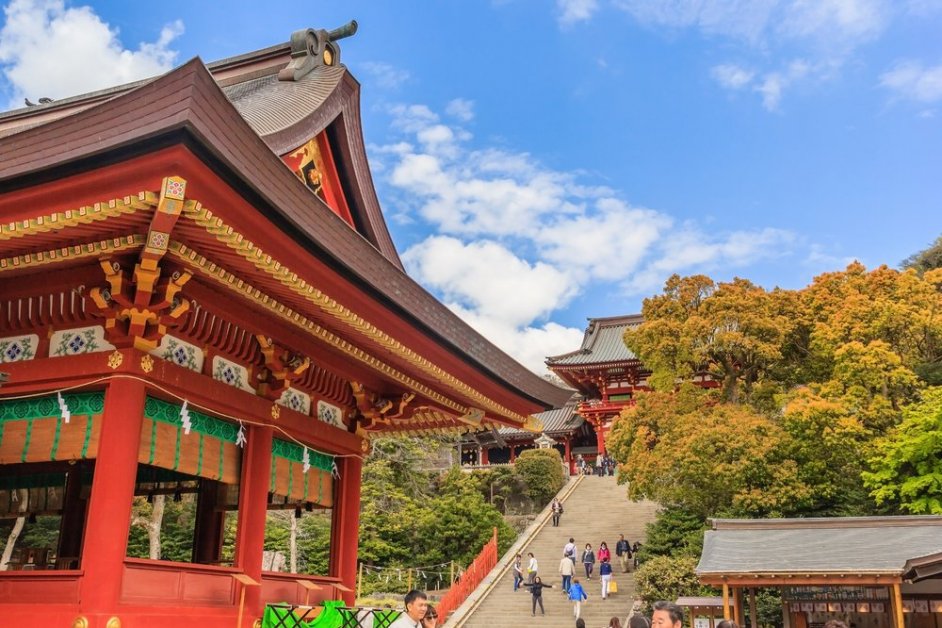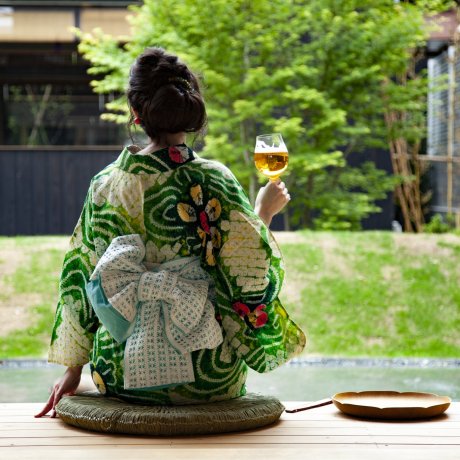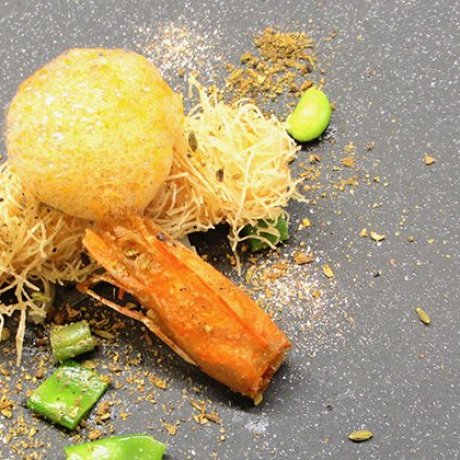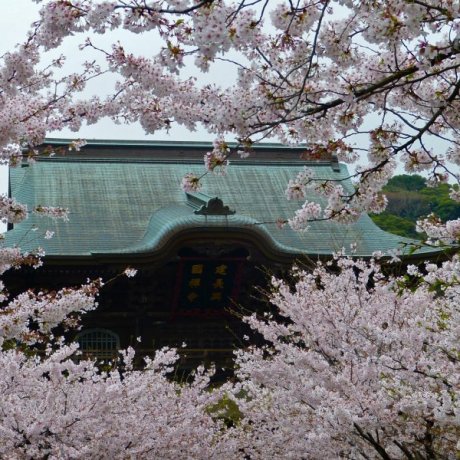 10
10
Kamakura Tsurugaoka Hachiman-gu
Josef DiermairTsurugaoka Hachiman-gu Shrine is a small shrine compared to Kyoto-size shrines, but charming and very alive.

Tsurugaoka Hachimangu Shrine is arguably the most important shrine in Kamakura and is located roughly in the center of the city. The shrine was originally founded in 1063 by Minamoto Yoriyoshi, the head of Japan’s Minamoto Clan, and was later moved in 1180 to its current location by Minamoto Yoritomo, the founder and first shogun of the Kamakura shogunate. This relocation marked the start of samurai society and Kamakura as a spiritual and social center of Japan. This rich history and culture is still present in Kamakura today.
The shrine is dedicated to Hachiman, the guardian deity of samurai and the Minamoto Clan. Hachiman is worshiped for good fortune in warfare.
The long pathway to the shrine runs through Kamakura City and is marked by multiple red torii gates, showing an interconnectedness between spirituality and urban life. Upon entering the shrine grounds, you will see two ponds on either side of you. The pond on the left represents the Minamoto clan, and the one on the right represents the Taira Clan (Minamoto’s rival). The Taira pond purposefully has four islands in it, which symbolizes the bad blood between the clans as four can be pronounced the same as “death” in Japanese. Beside the Minamoto pond is a beautiful peony garden that is open in winter and spring when the flowers are in full bloom.
Past the ponds you will come across the mai-den, which is located at the base of the stairs to the main hall. This vibrant red building is used as a stage for music and dance performances throughout the year’s festivities. Atop the wide staircase is the main hall. This traditionally designed structure features a red facade with gold-and-green detailing and is a commanding sight due to its massive size. Beside the main hall is a treasure hall that displays historical artifacts such as swords and masks.
The grounds are also home to numerous smaller buildings and shrines, most notably Wakamiya and Maruyama Inari Shrine, which, along with the main hall, are nationally important cultural properties.
Tsurugaoka Hachimangu hosts numerous events throughout the year. One of the shrine’s most popular festivals occurs from September 14th to 16th and features yabusame horseback archery. The shrine is also one of Japan’s most popular spots for hatsumode, which is the first shrine visit of the year.
Tsurugaoka Hachimangu is 10-15 minutes walk from JR Kamakura station (take the east exit).
 10
10
Tsurugaoka Hachiman-gu Shrine is a small shrine compared to Kyoto-size shrines, but charming and very alive.

Starting more than 800 years ago, Tsurugaoka Hachimangu Shrine was the center of the great samurai city of Kamakura.

Pink and white lotus flowers in the ponds at Hachimangu Shrine in Kamakura

If you happen to come to Japan in July or August, then I highly recommend you visit the two lotus ponds at Hachimangu Shrine in..

Experience the Samurai spirit through horseback archery at the Tsurugaoka Hachimangu Shrine in Kamakura
 12
12
If you visit Kamakura in the summer from mid-July to mid-August, drop in at Hachimangu Shrine, not to see the shrine, but the ..
 18
18
Tsurugaoka Hachimangu Shrine; the center of Kamakura, the first capital of the samurai.

Kamakura Hachiman-gu, Star Festival: During the season, beautiful colorful bowls with slips of paper, and bamboo branches ador..

Taisen-kaku is a 100-year-old inn just seconds away from Hase Kanon Temple. The service they provide will leave you with a memorable..

Kishi-ke is traditional, yet modern, Japanese-style inn that aims to connect guests with the present and help them achieve inner..

Lunch at The Scapes, Hayama: Enjoy really delicious vegetables, a nice tender steak and tasty deserts, a sophisticated atmosp..

At the creative French restaurant, Nature et Sens, diners are treated to an experience for the senses. Seasonal ingredients and Kamakura produce take..

Taste Aratama's famous fried pork cutlet and fall in love with the fresh flavors. Tonkatsu isn't all that's on the menu. Be sure to try Aratama's..

Discover the taste that Kamakura locals are in love with. New German's fluffy custard-filled sponge cakes are a dessert that is sure to impress. The..

Kenchoji is Kamakura’s oldest Zen temple and is recognized as the top temple of the city’s Five Great Zen Temples. It was originally founded by regent..

Myohonji, located in the heart of Kamakura, is one of the oldest Nichiren-sect temples of Japanese Buddhism. Despite its city location, the temple is..

Hongakuji Temple (本覚寺) is dedicated to Ebisu, part of the Kamakura seven deities of good luck. The temple was founded by Ashikaga Mochiuji in 1436.
Your feedback has been sent.